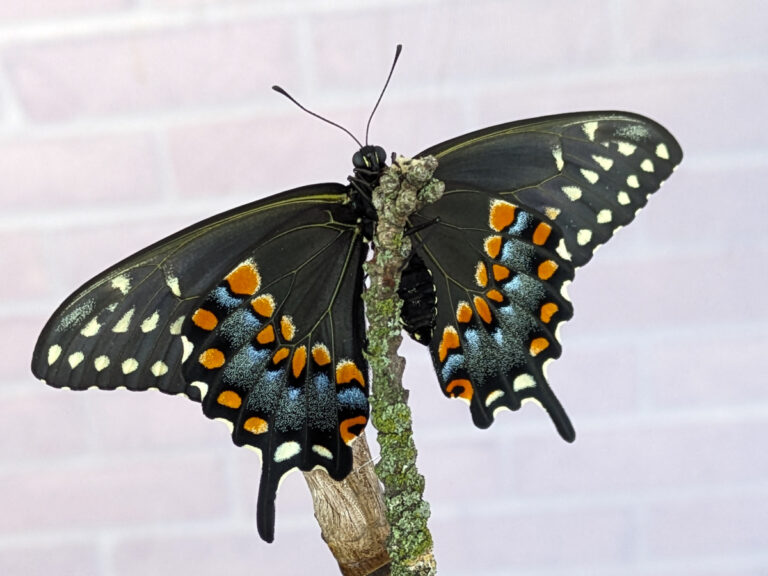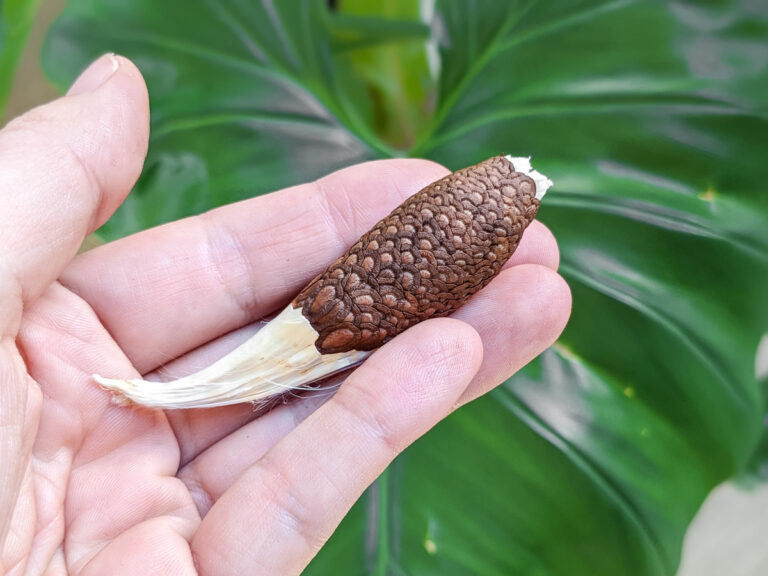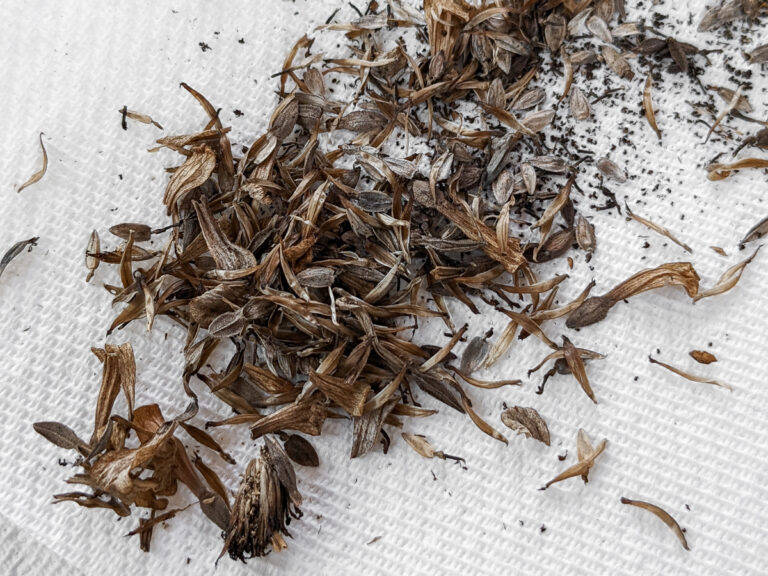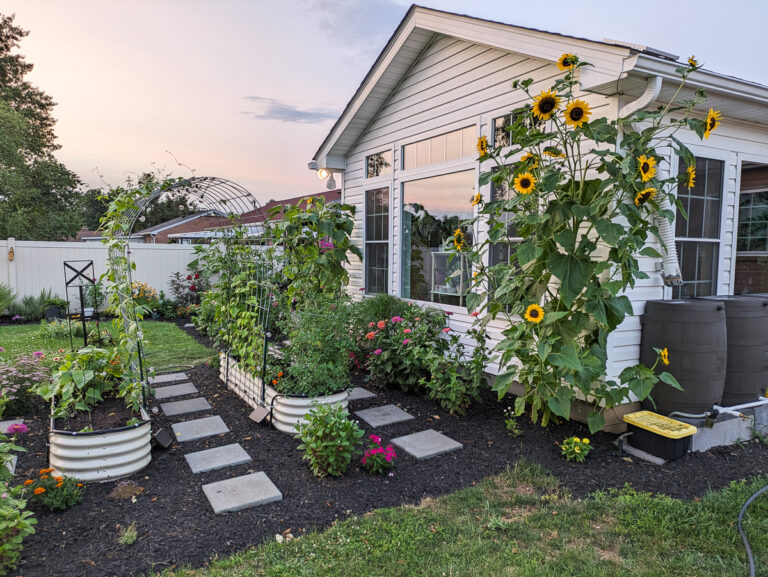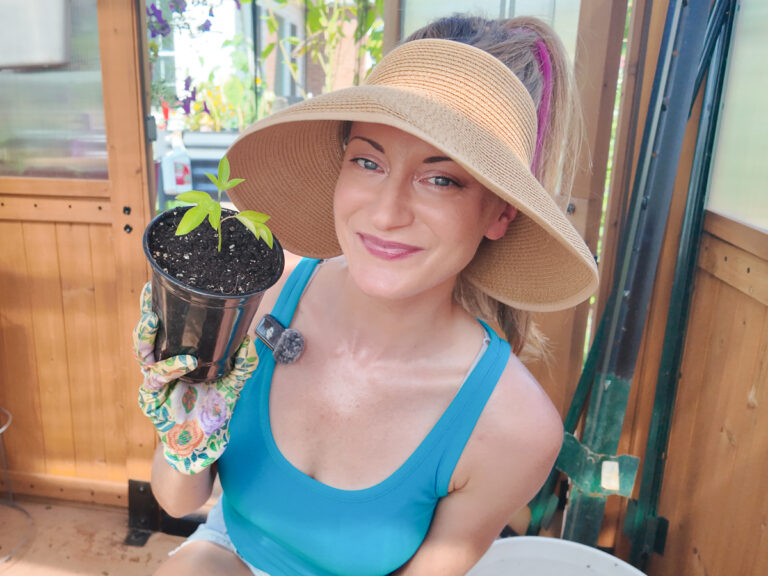Why I Love Growing Creeping Phlox
If you’re looking for a vibrant, low-maintenance way to cover bare spots in your garden and support pollinators, then creeping phlox might just be your new favorite plant! I know it’s one of my favorites. From its super early bloom time to its gorgeous green foliage all growing season long, creeping phlox checks a lot of boxes.
I’m walking you through everything you need to know about creeping phlox, including what it is, where its from, why it makes such an excellent groundcover, and how it helps support pollinators in your garden.
Basic info on creeping phlox
Creeping phlox—which you’ll also sometimes hear referred to as “moss phlox”—is a low-growing, spreading perennial native to the eastern and central United States. (I’m in Maryland zone 7, and it’s native here!) It loves full sun but will tolerate some light shade. I have all of mine in full sun.
It typically grows only 4-6″ tall, but it spreads out to form a dense, semi-evergreen mat that becomes absolutely covered in flowers in early- to mid-spring. The flowers can be shades of pink, purple, white, and even some blues. But the green foliage looks great even when it’s not in bloom.
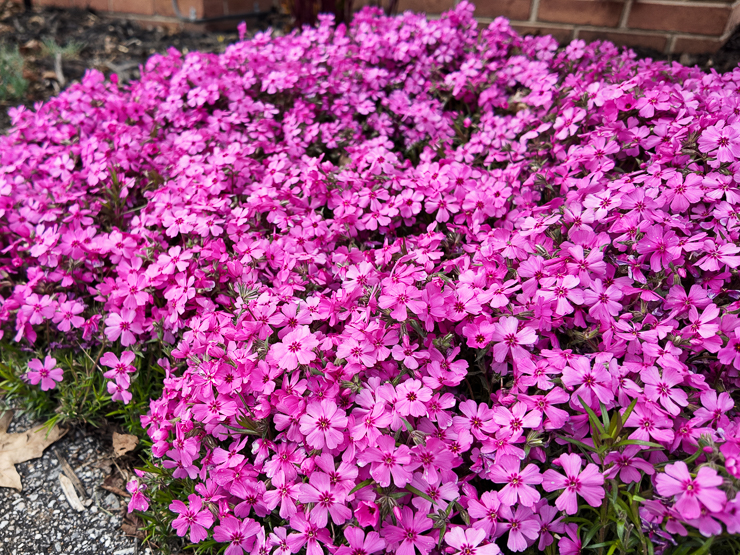
Why it’s a good groundcover
Creeping phlox isn’t just pretty…it’s practical, too! It has a shallow root system that helps hold soil in place, making it great for slopes and hillsides to help with erosion control. There’s a small sloped front yard in a neighborhood near us that doesn’t have any grass—they’ve replaced the entire area with creeping phlox, and it’s beautiful.
It’s also low-maintenance. Once established, it’s drought-tolerant, doesn’t need much fussing over, and rarely has pest problems. Its dense mat-like growth helps to smother out weeds and keeps the soil cool and moist underneath. Weeds love bare soil, so the more I can fill in gaps in the garden with things like creeping phlox, the better!
And it is super versatile. It works beautifully in weird spaces like between raised garden beds or in rock gardens. I have it planted in small spots between our raised beds, and it has been filling the awkward areas in nicely (see pic below). We also added some in around the rocks that line our pond this year to hopefully fill out those crevices by next year.

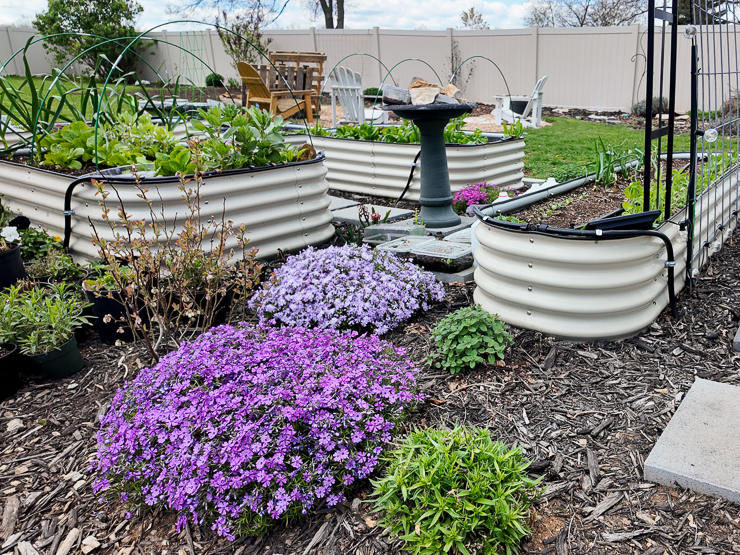
Benefits to pollinators
When creeping phlox bursts into bloom, it becomes a magnet for early-season pollinators when not much else is flowering. Bees, butterflies, and even hummingbirds are drawn to its rich nectar. I want to attract beneficial insects to my garden as early as possible to help control early outbreaks of not-so-beneficial bugs, and creeping phlox helps a lot on that front!
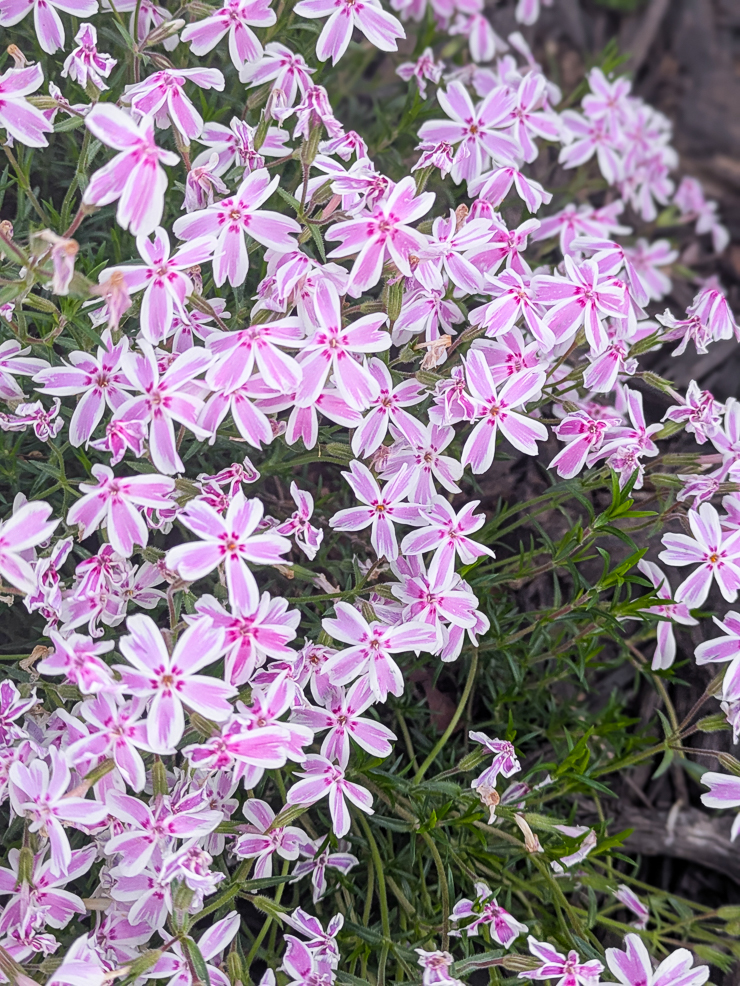
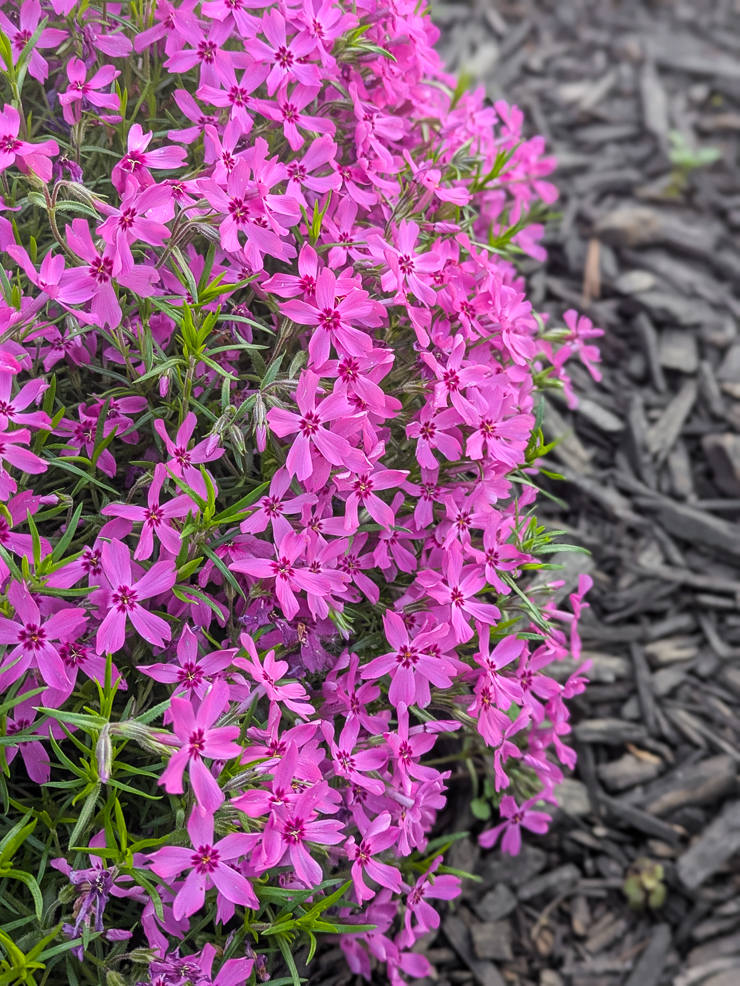
How to split & propagate
One of the best things about creeping phlox is that it’s super easy to propagate. If your phlox is getting a little too thick or has started to thin out in the middle, it’s time to give it a quick refresh through division. The best time to divide it is either right after it finishes blooming in the spring or in early fall, giving it time to settle in before winter.
Here’s how to split it…
- Use a small shovel to carefully lift a clump of the plant. Try to get a decent chunk of roots with it. Don’t worry if some roots break. Creeping phlox is tough!
- Once you’ve dug it up, gently pull the plant apart with your hands or cut it into smaller sections with a clean knife or spade.
- Replant your divisions right away in their new spot or in a pot. Water well, and keep the soil slightly moist until they’re established.
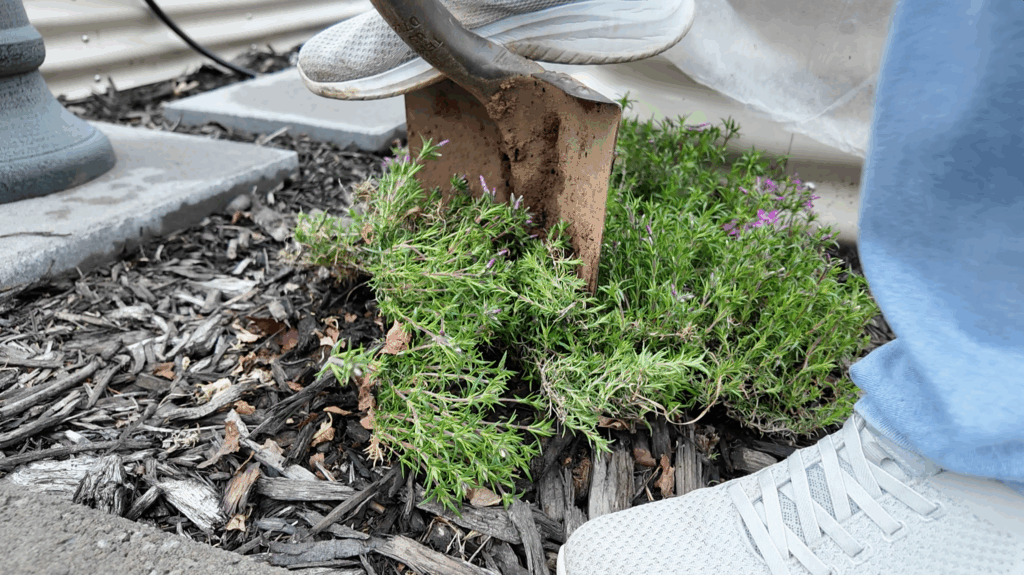
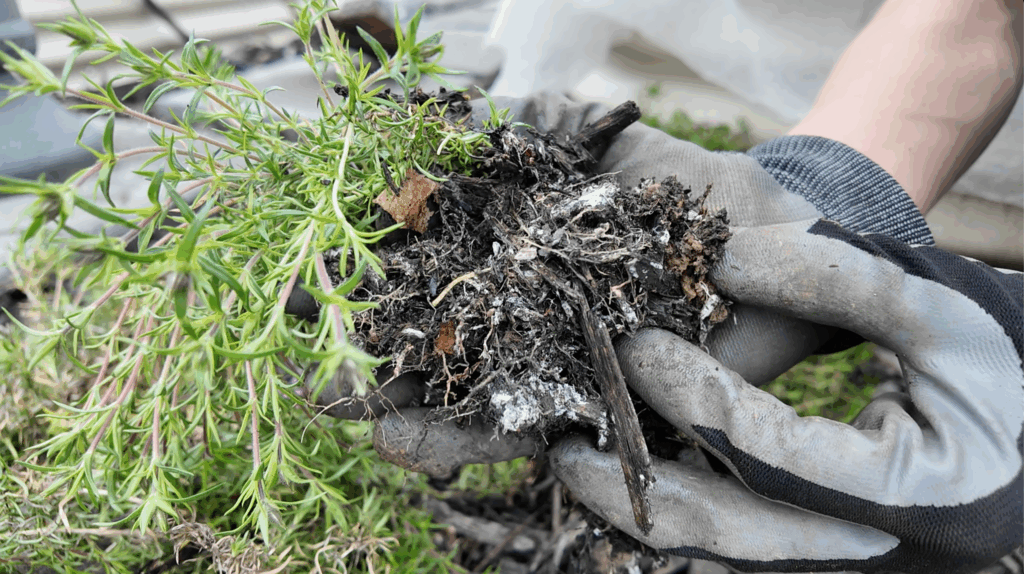
Here’s how to propagate it…
It’s also easy to propagate through cuttings. To do this, look for a healthy, non-flowering stem 4 to 6 inches long. Using clean scissors or garden snips, cut just below a leaf node. That’s where new roots are most likely to grow.
Gently strip off the leaves from the bottom half of the stem so you’ll have a clean section that will go into the soil. Stick the cutting into a small pot filled with fresh potting mix. Keep consistently moist and put in a bright location. Your new plant should root in a few weeks and show new growth.
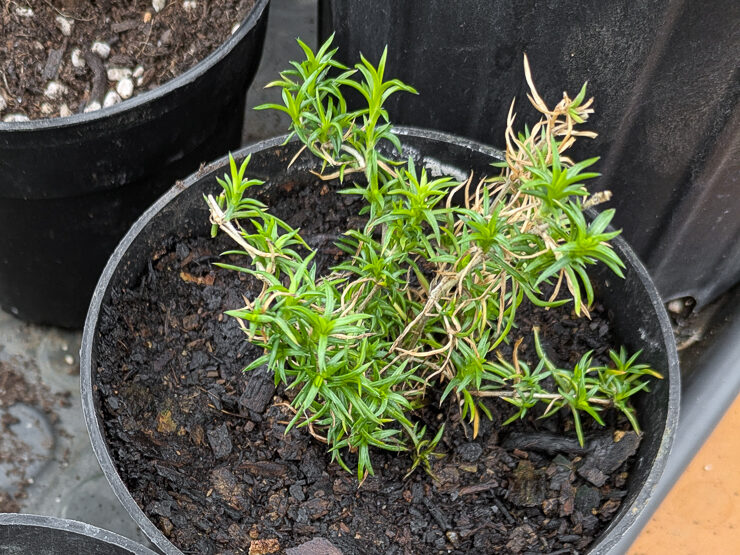
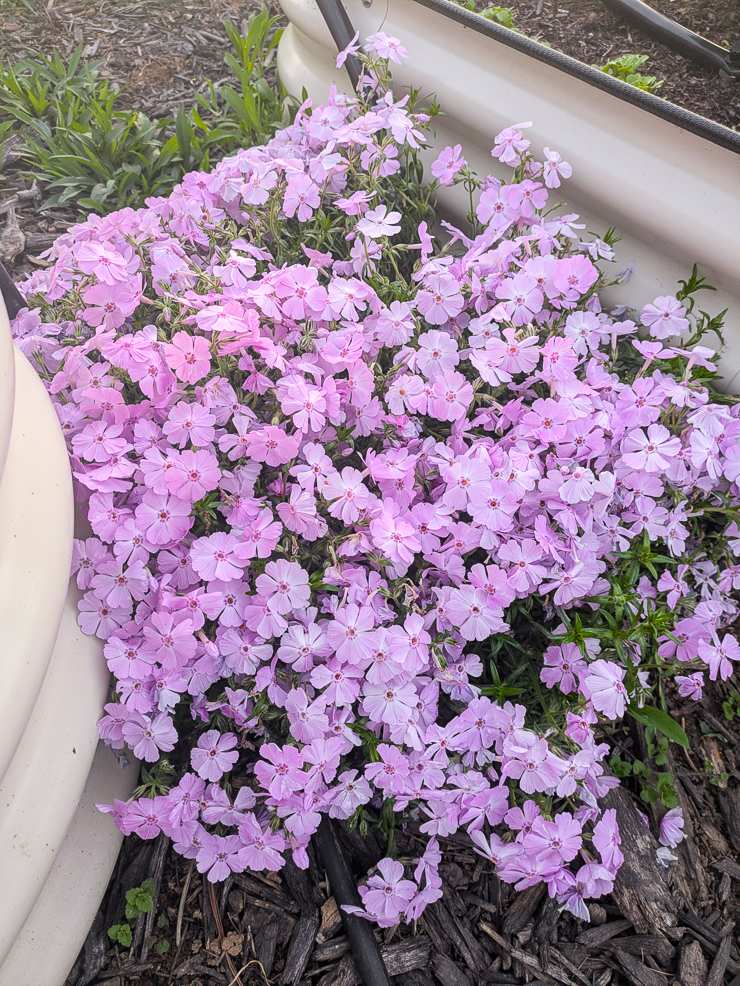
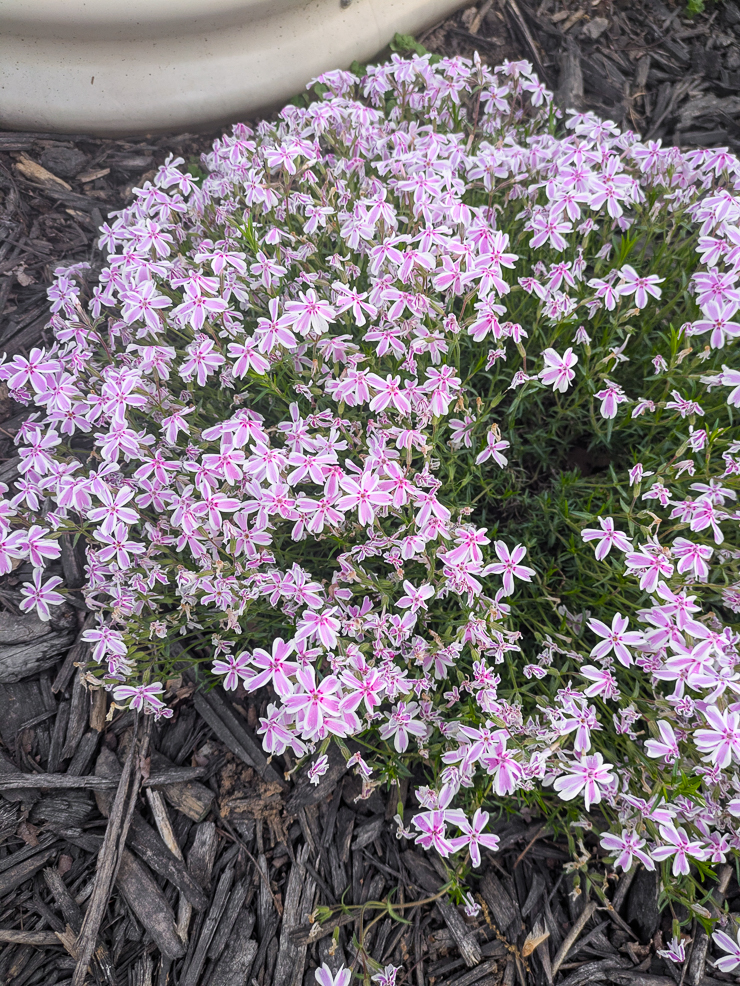
So whether you’re landscaping a slope, filling in a bare patch, or just want to attract more bees and butterflies, creeping phlox is a gorgeous, sustainable option 🙂 I hope you’re inspired to add some to your garden!


